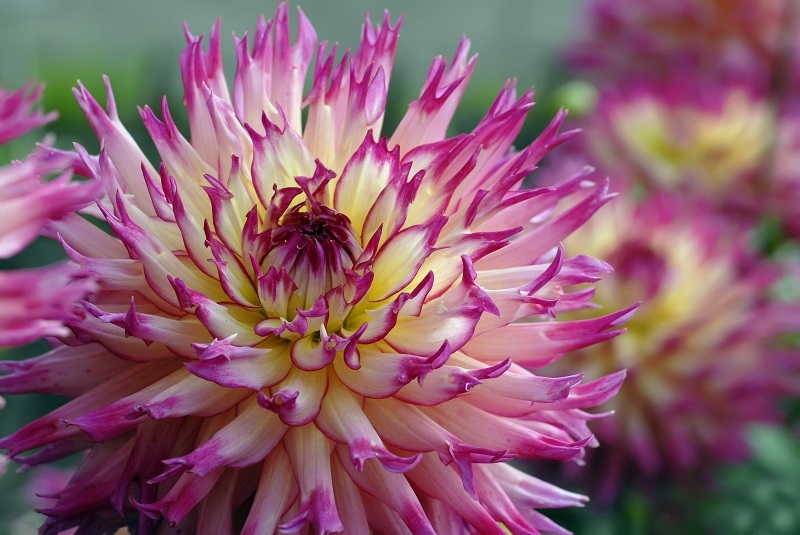Beyond the Bloom: 7 Eye-Opening Tulip Facts
Posted on 19/08/2025
Beyond the Bloom: 7 Eye-Opening Tulip Facts
When you think of spring, tulips might be one of the first flowers that come to mind. From vibrant fields in the Netherlands to delicate bouquets on dining tables, these iconic blossoms capture our collective imagination. But how much do you really know about tulips? This comprehensive guide goes beyond the bloom to reveal seven astonishing tulip facts that will transform the way you see this timeless flower. Whether you're a gardening enthusiast, floral designer, or simply curious about nature's wonders, these tulip insights are sure to captivate and educate.
1. The Surprising Origins of Tulips: Not Just Dutch!
When you picture tulips, your mind might instantly journey to the idyllic, colorful tulip fields of Holland. Dutch tulips are world-renowned, but did you know tulips didn't actually originate in the Netherlands? Here's the real story:
- Tulips are native to Central Asia. The area stretching from southern Russia to the mountainous regions of Kazakhstan, Iran, and Afghanistan is their true birthplace.
- They were first cultivated by the Ottoman Empire centuries before arriving in Europe.
- Turkish sultans loved tulips so much that the flower became a symbol of wealth and prestige, with special gardens reserved solely for their cultivation.
The word "tulip" actually comes from the Turkish word for turban, due to the flower's resemblance to this traditional headwear. It wasn't until the 16th century that tulips were introduced to Europe, where they quickly became an obsession, leading us straight to our next eye-opening tulip fact.

2. Tulipmania: The World's First Financial Bubble
Tulipmania is one of the most fascinating chapters in economic history. In the early 1600s, tulips became so highly coveted in the Netherlands that their bulbs sparked a financial frenzy.
Key Details About Tulipmania:
- Tulip bulbs were traded on futures markets and fetched prices higher than most houses at the time.
- Dutch painters and poets captured their beauty, and society's elite competed to amass the rarest varieties.
- At the height of Tulipmania in 1636-1637, a single tulip bulb could sell for more than a skilled artisan's annual salary.
- The bubble inevitably burst, causing financial ruin for many investors.
This infamous episode has since become a cautionary tale about speculative bubbles -- all thanks to the humble tulip flower.
3. Hidden Meanings: The Language and Symbolism of Tulips
Across centuries and cultures, tulips have held deep symbolic meanings. From passionate declarations to subtle messages, here's what different tulip colors convey:
- Red tulips: Love and deep passion. In the language of flowers, a bouquet of red tulips is said to declare "I love you."
- Yellow tulips: Historically represented unrequited love, but today often symbolize cheerful thoughts and sunshine.
- White tulips: Forgiveness, purity, and honor. Often used in sympathy arrangements or weddings.
- Purple tulips: Royalty and noble elegance.
- Pink tulips: Affection, caring, and good wishes.
Beyond color, tulips are often associated with rebirth and renewal, making them the perfect flower for spring celebrations.
4. Tulips Come in Over 3,000 Varieties
One of the most astonishing facts about tulips is their incredible diversity. Today, there are over 3,000 registered and named tulip varieties, organized into about fifteen main groups. These varieties differ in shape, size, color, and bloom time.
Popular Types of Tulips Include:
- Single Early Tulips: Known for their simple, classic appearance and blooms in early spring.
- Double Late (Peony Tulips): Boasting lush, vase-shaped, multi-layered petals that resemble peonies.
- Fringed Tulips: Recognized by their fringed, lacy petal edges.
- Parrot Tulips: Displaying twisted, feathered petals in vibrant or even multi-colored forms.
- Viridiflora Tulips: Characterized by green streaks running through their petals.
- Lily-Flowered Tulips: Noted for their elegant goblet shape and flared petal tips.
The sheer variety of tulip blooms means there's a perfect tulip for every garden, bouquet, and occasion.
5. Botanical Wonders: Tulips Are Technically Perennials, But...
Tulips belong to the lily family (Liliaceae) and are botanically classified as perennials. In theory, this means they should come back year after year. However, in practice, many tulip varieties behave more like annuals, especially hybrids commonly grown in gardens.
Why Don't Tulips Always Come Back?
- Modern tulip hybrids have been bred primarily for their breathtaking blooms rather than long-term vigor.
- Tulips require a cold, dry dormant summer period, which many home gardens do not provide.
- Soil conditions, pests, and bulb overcrowding can all reduce their ability to rebloom.
For gardeners aiming for reliable perennial tulip flowers, species tulips and certain old varieties are best, as they more closely mimic their wild, mountain-dwelling ancestors.
6. Edible (But Not Always Delicious): Tulips in the Kitchen
You might be surprised to learn that tulip petals are technically edible. In the 1940s, during WWII and particularly during the Dutch "Hunger Winter," desperate citizens were forced to eat tulip bulbs to survive. While the petals are less toxic, bulbs can only be consumed if properly processed, as they often contain compounds that can cause stomach irritation.
Tulip Petals in Modern Cuisine:
- Tulip petals can be used as a colorful garnish in salads.
- Some chefs stuff them with mousse or cream cheese for unique appetizers.
- Caution: Never eat commercially grown tulips, as they may have been treated with pesticides.
Fun Fact: There are even tulip-flavored liqueurs and chocolates found in specialty shops!
7. Tulip Festivals: A Blooming Cultural Phenomenon
Celebration of tulip blooms is a global event, with countless tulip festivals drawing millions of visitors every spring. These festivals are a tribute to the cultural, economic, and natural significance of tulips. The most famous tulip festivals around the world include:
- Keukenhof Gardens, Netherlands: Often called the "Garden of Europe", boasting over 7 million tulips on display each spring.
- Canadian Tulip Festival, Ottawa: Commemorates the historic gift of tulip bulbs from the Dutch royal family after WWII and celebrates the blossoming friendship between the two nations.
- Skagit Valley Tulip Festival, USA: Spanning acres of colorful tulip fields in Washington State.
- Istanbul Tulip Festival, Turkey: Pays tribute to the flower's original homeland, showcasing millions of blooms in city parks.
Attending a tulip festival is a bucket-list experience for flower lovers and a wonderful way to appreciate the diverse beauty and history of tulips in full bloom.
Bonus: Fun Facts and Tulip Trivia
- The world's most expensive tulip ever sold was the 'Semper Augustus' in 17th century Holland, valued at 10,000 guilders -- enough to buy a grand house in Amsterdam!
- Tulips follow the sun, a phenomenon known as heliotropism. Even after being cut, tulip stems continue to grow and bend towards light sources.
- The Netherlands exports over 2 billion tulip bulbs annually, making it the world's leading supplier.
- Tulips have inspired countless artists, from the Old Masters to Van Gogh, and appear in many works of art and literature as symbols of beauty and transience.

How to Grow Tulips at Home: Essential Tips
If this journey through tulip flower facts has inspired you to try your hand at cultivating these stunning blooms, here are some quick tips to ensure success:
- Plant tulip bulbs in fall, about 6-8 weeks before your area's first hard frost.
- Choose a sunny spot with well-drained soil for the healthiest blooms.
- Plant bulbs 6-8 inches deep and about 4-5 inches apart for a dramatic display.
- Fertilize with a bulb-specific fertilizer for robust growth.
- After blooming, let the foliage die back naturally to nourish next year's blooms.
Pro tip: For a longer tulip season, plant a mix of early, mid- and late-bloomers!
Conclusion: The Enduring Allure of Tulips
The world of tulips is full of surprises and rich history. From their exotic origins and their role in financial history, to their vibrant presence in gardens and art, tulip blooms have truly left a unique mark on cultures around the globe. Whether you admire them for their symbolism, diversity, or simply their breathtaking beauty, tulips are more than just a springtime icon -- they're a living link to stories of desire, survival, and celebration.
Next time you see a field or vase of tulips, remember these remarkable facts and allow yourself to appreciate the wonder that lies beyond the bloom.
Searching for more flower inspiration?
Explore our other informative articles about flowers, gardening, and the hidden histories that shape our favorite plants.
Keywords: tulip facts, eye-opening tulip facts, tulip flowers, tulip blooms, history of tulips, interesting tulip trivia
Latest Posts
Gardener's Guide to Healthy Hydrangeas
Comprehensive Orchid Care for Beginners
Beyond the Bloom: 7 Eye-Opening Tulip Facts
How to Achieve Longer-Lasting Poinsettias
Cultivate Joy and Well-Being with the Simple Gift of Flowers





